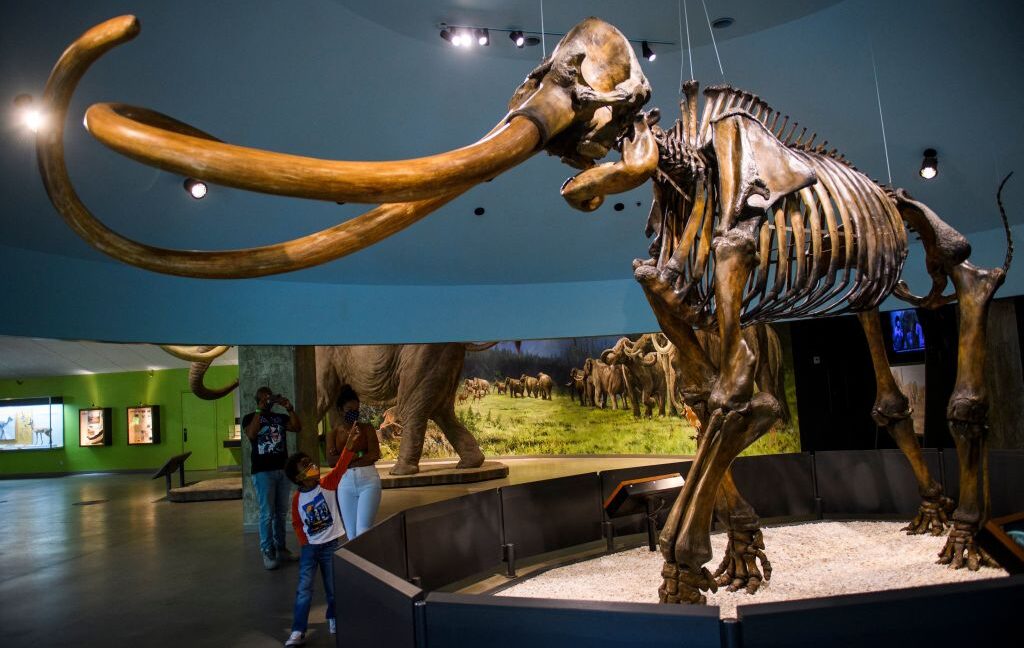Science
Researchers Uncover Distinct Genetic Traits of Central American Mammoths

Recent genetic research has revealed that Central American mammoths, specifically the Columbian mammoth, possess distinct genetic traits that separate them from their better-known relatives. This finding stems from a study conducted in the Basin of Mexico, which has provided new insights into the evolutionary relationships of various mammoth species.
While mammoths are often generalized as large, hairy elephants with prominent tusks, the reality is more complex. There are numerous species of mammoths, including the steppe mammoth, the woolly mammoth, and the Columbian mammoth, which primarily inhabited warmer regions, extending into Central America. The environmental conditions of these regions have historically made it challenging to obtain ancient DNA, complicating our understanding of these species.
A research team focused on the Basin of Mexico, an area rich with mammoth remains, including over 100 individuals discovered during the construction of Mexico City’s international airport. The team aimed to analyze genetic material from bones found in this region, where conditions typically degrade DNA more rapidly. Despite these challenges, the researchers were able to extract mitochondrial DNA from these remains, a crucial development in understanding the genetic landscape of the Columbian mammoth.
New Insights from Ancient DNA
The research yielded 61 new mitochondrial genomes from the tested samples, with 28 of high enough quality for analysis. The genetic data revealed a surprising clustering of the Columbian mammoths from Central America, indicating they are more closely related to each other than to other populations of Columbian or woolly mammoths.
By creating a family tree based on this genetic information, the researchers noted an unusual placement of the Central American mammoths within the larger mammoth lineage. While they clustered together, the presence of woolly mammoths on either side suggested a potential offshoot relationship. However, some Columbian mammoths from northern regions were found to be more closely related to woolly mammoths than to their Central American counterparts.
This unexpected outcome raises questions about the traditional classifications of mammoths. The researchers propose two possible explanations for the genetic patterns observed. One theory suggests that the Columbian mammoth may have resulted from multiple hybridization events occurring across different locations, leading to isolated populations that share genetic traits due to geographic proximity rather than species classification.
The alternative explanation posits that the North American woolly mammoth carried a diverse array of mitochondrial lineages before any hybridization took place. This genetic diversity could have contributed to the formation of the Columbian mammoth population, with hybridization events involving numerous individuals resulting in a complex genetic heritage.
Implications for Future Research
The findings highlight the complexity of mammoth genetics and the need for further study. While mitochondrial DNA has provided valuable insights, the researchers acknowledge that a clearer picture could be obtained through nuclear DNA analysis. Unfortunately, the success rate for extracting mitochondrial DNA from warmer environments remains low, making it unlikely to find sufficient nuclear DNA from the Central American mammoths.
To advance this research, scientists emphasize the importance of examining Columbian mammoths from regions further north, where DNA preservation conditions may be more favorable. The study, published in the journal Science on March 15, 2025, underscores the intricate evolutionary history of these ancient creatures and the ongoing quest to understand their genetic legacy.
As researchers continue to explore the genetic landscape of mammoths, the distinct traits identified in the Columbian mammoths of Central America may shed light not only on their evolutionary past but also on the broader context of mammoth diversity across different habitats.
-

 Lifestyle1 week ago
Lifestyle1 week agoChampions Crowned in Local Golf and Baseball Tournaments
-

 Science2 weeks ago
Science2 weeks agoMicrosoft Confirms U.S. Law Overrules Canadian Data Sovereignty
-

 Education1 week ago
Education1 week agoRed River College Launches New Programs to Address Industry Needs
-

 Technology1 week ago
Technology1 week agoDragon Ball: Sparking! Zero Launching on Switch and Switch 2 This November
-

 Technology2 weeks ago
Technology2 weeks agoWorld of Warcraft Players Buzz Over 19-Quest Bee Challenge
-

 Technology2 weeks ago
Technology2 weeks agoGoogle Pixel 10 Pro Fold Specs Unveiled Ahead of Launch
-

 Science1 week ago
Science1 week agoChina’s Wukong Spacesuit Sets New Standard for AI in Space
-

 Science2 weeks ago
Science2 weeks agoXi Labs Innovates with New AI Operating System Set for 2025 Launch
-

 Science2 weeks ago
Science2 weeks agoTech Innovator Amandipp Singh Transforms Hiring for Disabled
-

 Technology2 weeks ago
Technology2 weeks agoNew IDR01 Smart Ring Offers Advanced Sports Tracking for $169
-

 Health2 weeks ago
Health2 weeks agoRideau LRT Station Closed Following Fatal Cardiac Incident
-

 Technology2 weeks ago
Technology2 weeks agoHumanoid Robots Compete in Hilarious Debut Games in Beijing
-

 Technology2 weeks ago
Technology2 weeks agoFuture Entertainment Launches DDoD with Gameplay Trailer Showcase
-

 Health2 weeks ago
Health2 weeks agoB.C. Review Urges Changes in Rare-Disease Drug Funding System
-

 Technology2 weeks ago
Technology2 weeks agoGlobal Launch of Ragnarok M: Classic Set for September 3, 2025
-

 Science2 weeks ago
Science2 weeks agoNew Precision Approach to Treating Depression Tailors Care to Patients
-

 Technology2 weeks ago
Technology2 weeks agoInnovative 140W GaN Travel Adapter Combines Power and Convenience
-

 Lifestyle2 weeks ago
Lifestyle2 weeks agoVancouver’s Mini Mini Market Showcases Young Creatives
-

 Business2 weeks ago
Business2 weeks agoNew Estimates Reveal ChatGPT-5 Energy Use Could Soar
-

 Science2 weeks ago
Science2 weeks agoInfrastructure Overhaul Drives AI Integration at JPMorgan Chase
-

 Top Stories2 weeks ago
Top Stories2 weeks agoSurrey Ends Horse Racing at Fraser Downs for Major Redevelopment
-

 Health2 weeks ago
Health2 weeks agoGiant Boba and Unique Treats Take Center Stage at Ottawa’s Newest Bubble Tea Shop
-

 Business2 weeks ago
Business2 weeks agoCanadian Stock Index Rises Slightly Amid Mixed U.S. Markets
-

 Technology2 weeks ago
Technology2 weeks agoDiscover the Relaxing Charm of Tiny Bookshop: A Cozy Gaming Escape










